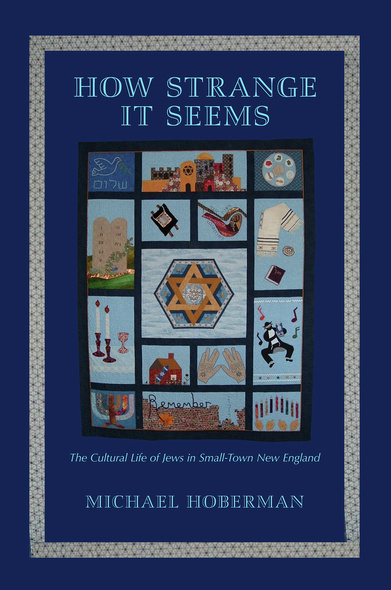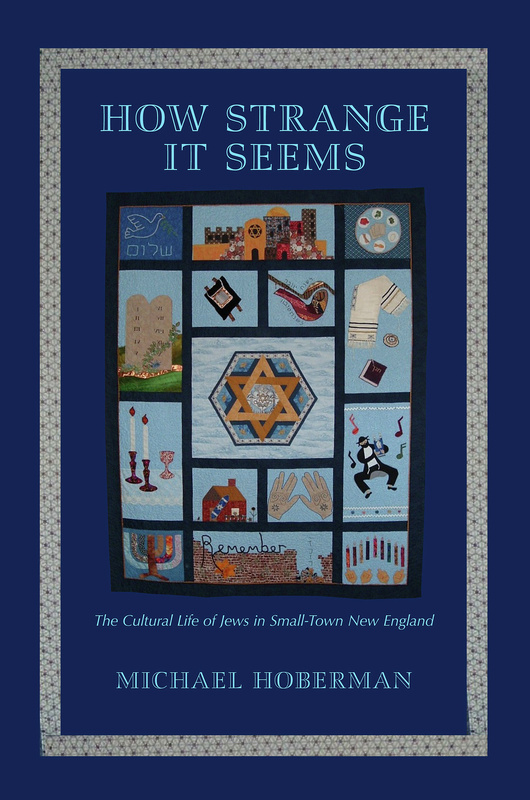How Strange It Seems
The Cultural Life of Jews in Small-Town New England
University of Massachusetts Press
Jews have lived in small-town New England since the colonial era, but during the last hundred years they have been especially active contributors to the region's cultural life. Part oral history, part ethnography, and part literary portrait, How Strange It Seems tells the story of this often overlooked group, tracing its patterns of settlement, economic activity, civic involvement, and religious life since the late 1800s. Based on more than fifty interviews with men and women of all ages from Maine, New Hampshire, Vermont, Massachusetts, and Connecticut, it seeks to understand what is distinctive—and not so distinctive—about contemporary Jewish communities outside the larger urban centers of the Northeast. Michael Hoberman weaves the personal stories of these individuals and families into a collective narrative that offers as much folklore as history and is equal parts Jewish and Yankee. He introduces us to Hiram Adelman, a Russian immigrant peddler and potato farmer who settled in northernmost Maine because its climate was comparable to his native Siberia, and to Shmuel Simenowitz, an urban transplant who produces kosher maple syrup in southern Vermont. We also meet Suzie Laskin, who moved to the White Mountains region of New Hampshire in the 1900s and soon established a local havurah, and Bob August of Whately, Massachusetts, who once ran what may have been the world's only Christmas tree farm owned by a Jewish family. Each section of the book explores how small-town New England Jews have both departed from and mimicked the broader patterns of Jewish American experience, while also illustrating how they have acclimated themselves to local practices without relinquishing a strong sense of Jewish identity. Accompanying the text are photographs by Janice Sorensen that include portraits of many of the interviewees and lively glimpses of the region's present-day Jewish revival.
Michael Hoberman has done a great service to the history of Jewish life in New England. . . . He has produced a well-written tale of 'ordinary' people's stories that will appeal to ordinary people, both Jews and non-Jews, across the length and breadth of small towns and big cities in New England and beyond. He has captured the sense of place that these immigrants and their sons and daughters created for themselves in a part of America that looked upon itself as the 'New Israel' and the Jerusalem of the 'city on the hill.' Perhaps that is why that sense of place resonated so deeply within both their Jewish and New England identities.'—Abraham J. Peck, author of The German-Jewish Legacy in America: 1938–1988
'Hoberman does an elegant job of weaving the texts derived from his interviews with his interpretative comments. The book has a strong narrative quality, as he lets his interviewees tell their stories and then links their stories into a larger story. . . . Because it complicates the notion of New England, at a time when many scholars are doing the same thing, it should appeal to people—scholars and general readers—who are revisiting the idea of New England as a Yankee domain.'—Burt Feintuch, coeditor of The Encyclopedia of New England
'Michael Hoberman's How Strange It Seems is a well-written and thoughtful contribution to New England ethnohistory. . . . Hoberman does an excellent job of telling the individual stories. He describes his book as 'more impressionistic than exhaustive.' He is too modest. While not exhaustive, his work provides a thoughtful and rich context for the tales he recorded. . . . I can recommend Hoberman's work as a contribution to the study of New England's tapestry, as well as a sensitive treatment of a small part of American Jewry.'—Journal of the Vermont Historical Society
Michael Hoberman is associate professor of English and folklore at Fitchburg State College and author of Yankee Moderns: Folk Regional Identity in the Sawmill Valley of Western Massachusetts, 1890–1920.





